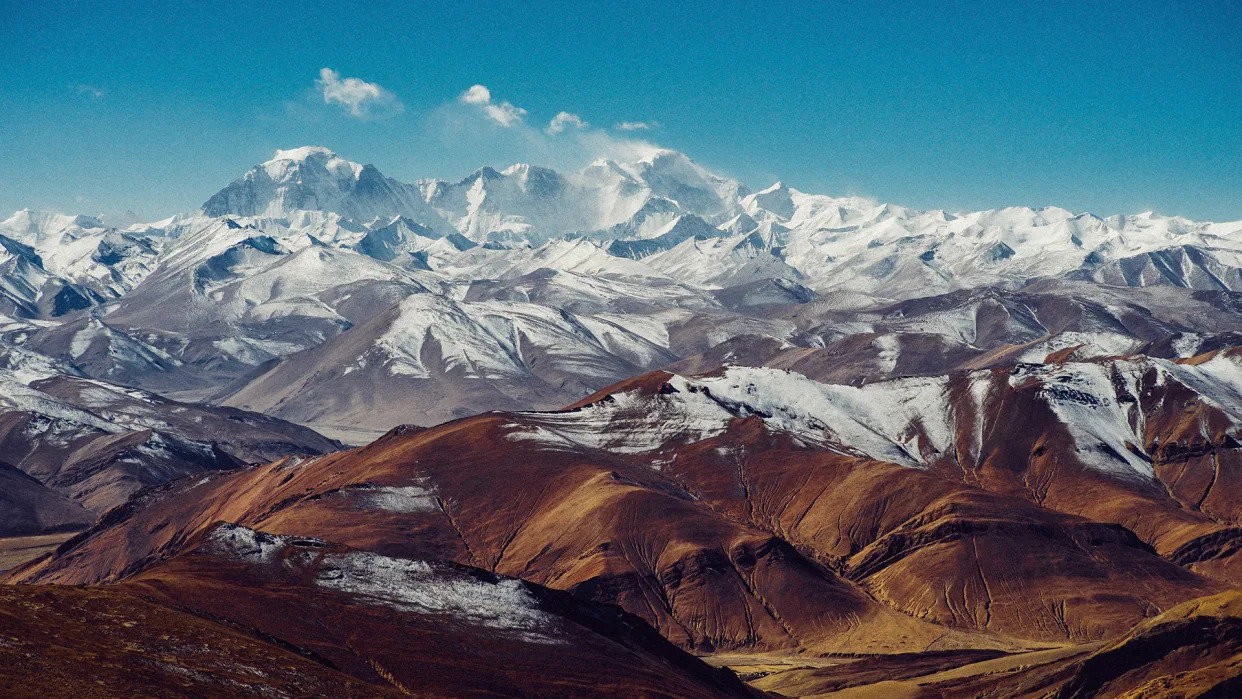Stephanie Pappas
Tue, January 16, 2024

Photo from a 4 week tour through Tibet, its fascinating history and beautiful himalayan landscape.
Tibet may be tearing in two beneath the rising Himalayas, with pieces of the continental plate peeling off like the lid off a tin of fish, researchers have discovered.
According to new research presented at the annual meeting of the American Geophysical Union and posted as a pre-peer-reviewed pre-print online, this shows that the geology beneath the world's highest mountain range may be even more complex than previously believed.
The Himalayas are growing because two continental tectonic plates, the Indian and Eurasian plates, are colliding beneath the colossal mountain range. In cases where oceanic and continental plates collide, the denser oceanic plate slides beneath the lighter continental plate in a process called subduction. When two similarly dense continental plates collide, however — as is the case below the Himalayas — it's not so simple to predict which plate will end up under the other, and geoscientists are still unsure exactly what's going on in Tibet.
Some suggest that the bulk of the Indian plate may simply be sliding under the Eurasian plate without diving deeply into the mantle, a process called underplating; others believe that perhaps deeper parts of the Indian plate are subducting, while the upper parts are wedging themselves stubbornly against the bulk of Tibet.
The new research suggests that the answer could be both these explanations. The researchers found evidence that the Indian plate is subducting, but it's warping and tearing as it does so, with the upper half delaminating, or peeling away.
"We didn't know continents could behave this way, and that is, for solid earth science, pretty fundamental," Douwe van Hinsbergen, a geodynamicist at Utrecht University in the Netherlands, who was not involved in the work, told Science Magazine.
To get a clearer picture of what's happening below Tibet, the researchers investigated earthquake waves traveling through the crust at the region where the two plates collide. They reconstructed images from these waves showing what appear to be tears in the slab of the Indian plate's crust. In places, the bottom of the Indian plate is 124 miles (200 kilometers) deep, Science Magazine reported. In others, it is only 62 miles (100 km) to the bottom of the plate, suggesting some of it has peeled away.
RELATED CONTENT
— A single massive tectonic collision? That's not how the Himalayas came to be, scientists say
— Is Mount Everest really the tallest mountain on Earth?
— Earth's plate tectonics traced back to 'tipping point' 3.2 billion years ago
Previous work, published in 2022 in the journal PNAS, also showed variations in the types of helium bubbling up from geothermal springs in the region. One variation of helium, known as helium-3, is found in mantle rocks, while helium with lower concentrations of helium-3 is likely to come from the crust. By mapping the variations in helium over multiple springs, the researchers found the boundary where the two plates currently meet just north of the Himalayas. The findings from these geochemical studies support the earthquake wave results in hinting at a splintering plate, the researchers wrote.
The new research may also point to areas of increased earthquake risk along the plate boundary, according to Science, though researchers don't yet fully understand how tearing and warping deep within the crust translates to the buildup of stress at the surface.
No comments:
Post a Comment